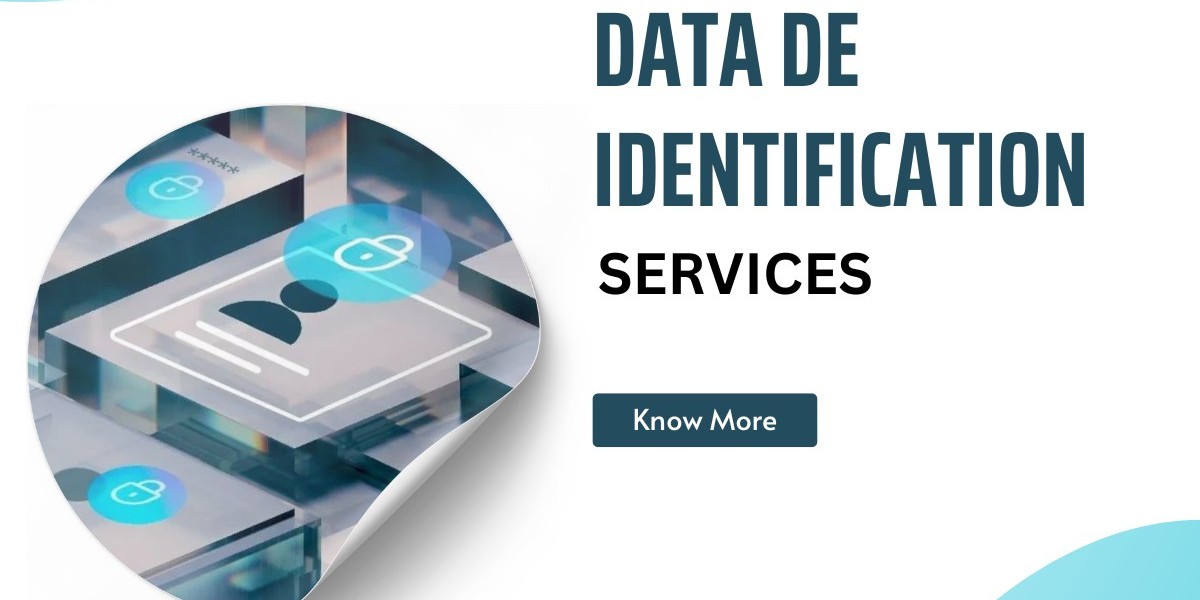In today’s data-driven world, protecting sensitive information is more critical than ever. With the increasing amount of data being collected, shared, and analyzed, organizations face a growing challenge: how to use data effectively while ensuring the privacy of individuals. This is where Data De-identification Services come into play—a process that enables organizations to protect sensitive information by removing or masking identifiable details, allowing data to be used without compromising privacy.
What are Data De-identification Services?
Data De-identification Services involve the methodical processing of data to remove or obscure personal identifiers, making it difficult to trace the data back to an individual. This process is essential for maintaining privacy, especially when handling large datasets that may contain sensitive information such as names, social security numbers, or medical records. De-identification can involve various techniques, including anonymization, pseudonymization, and masking, each designed to achieve different levels of privacy protection.
Anonymization involves removing all identifiable information, rendering it impossible to re-identify individuals. Pseudonymization, on the other hand, replaces identifiable information with artificial identifiers or pseudonyms, which can be reversed if necessary. Masking involves hiding specific data elements, such as displaying only the last four digits of a social security number. These techniques can be used individually or in combination, depending on the level of privacy required.
The Importance of Data De-identification Services
The significance of Data De-identification Services cannot be overstated. With the growing volume of data being generated and the increasing number of cyber threats, protecting sensitive information is paramount. Data breaches can lead to significant financial losses, legal consequences, and damage to an organization’s reputation. By implementing Data De-identification Services, organizations can reduce the risk of exposing sensitive information while still leveraging data for analysis and decision-making.
Moreover, Data De-identification Services are essential for complying with privacy regulations such as the General Data Protection Regulation (GDPR) in the European Union and the Health Insurance Portability and Accountability Act (HIPAA) in the United States. These regulations require organizations to take appropriate measures to protect personal data and ensure that individuals’ privacy rights are respected. Failure to comply with these regulations can result in severe penalties, making de-identification a crucial component of any data protection strategy.
Techniques and Best Practices in Data De-identification Services
Effective Data De-identification Services require a combination of techniques and best practices tailored to the specific needs of an organization. Here are some of the most commonly used techniques:
Data Masking: Masking replaces sensitive data with a series of symbols or characters. For example, masking a credit card number might display it as "**** **** **** 1234". This technique is useful for protecting data in testing and development environments where access to real data is not required.
Tokenization: Tokenization involves replacing sensitive data with a token—a unique identifier that has no intrinsic value. The original data is stored securely in a separate location, and the token can be used in its place for data processing and analysis.
Generalization: Generalization reduces the granularity of data to minimize the risk of identification. For example, instead of recording an individual’s exact age, the data might categorize them into an age range (e.g., 30-40 years). This technique is particularly useful in scenarios where detailed information is not necessary.
Data Suppression: In cases where certain data points are not essential, they can be suppressed or removed entirely. For example, removing the exact date of birth while retaining the year of birth can help protect individual identities.
Noise Addition: Adding random noise to data can obscure identifiable information while preserving the overall patterns in the data. This technique is often used in statistical analysis to prevent re-identification of individuals.
Best practices for Data De-identification Services include understanding the specific needs and risks associated with the data, choosing the appropriate techniques, and regularly reviewing and updating de-identification processes to address evolving privacy threats. It’s also essential to maintain a balance between data utility and privacy—ensuring that de-identified data remains useful for analysis while protecting individuals’ privacy.
Challenges in Data De-identification Services
While Data De-identification Services are a powerful tool for protecting privacy, they come with their own set of challenges. One of the primary challenges is achieving the right balance between data utility and privacy. Over-de-identification can render data useless for analysis, while under-de-identification can leave data vulnerable to re-identification.
Another challenge is the risk of re-identification, where de-identified data can be combined with other datasets or information to re-identify individuals. This risk is particularly high in scenarios where data is shared across organizations or made publicly available. To mitigate this risk, organizations must implement robust Data De-identification Services and continuously monitor for potential re-identification threats.
Finally, the complexity of modern data ecosystems adds another layer of difficulty. With data coming from various sources, including social media, IoT devices, and cloud platforms, ensuring consistent and effective de-identification across all data types can be a daunting task. Organizations must adopt comprehensive data governance strategies that include clear guidelines for Data De-identification Services and privacy protection.
Conclusion
Data De-identification Services are a crucial aspect of modern data management, enabling organizations to use data while protecting the privacy of individuals. By implementing advanced de-identification techniques and adhering to best practices, organizations can minimize the risk of data breaches, comply with privacy regulations, and maintain trust with customers and stakeholders. As the data landscape continues to evolve, so too must the strategies for protecting sensitive information, making Data De-identification Services an ongoing priority for any organization that handles personal data.
Osiz, a leader in data privacy solutions, offers cutting-edge Data De-identification Services tailored to the unique needs of your organization. With our expertise, you can confidently safeguard sensitive information while unlocking the full potential of your data. Protect your data with precision—partner with Osiz today.








